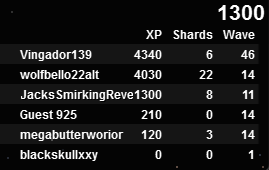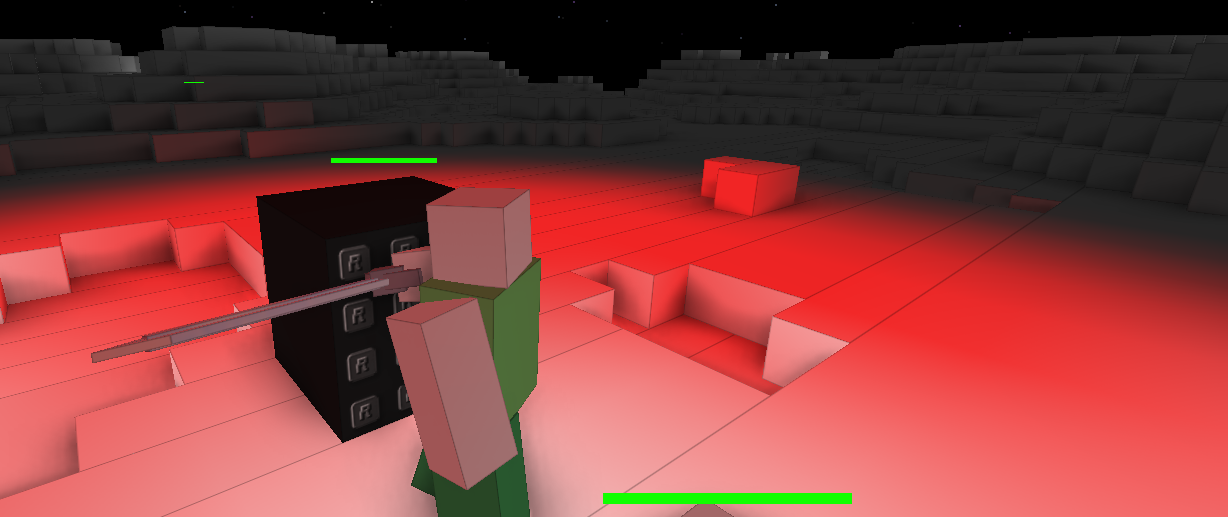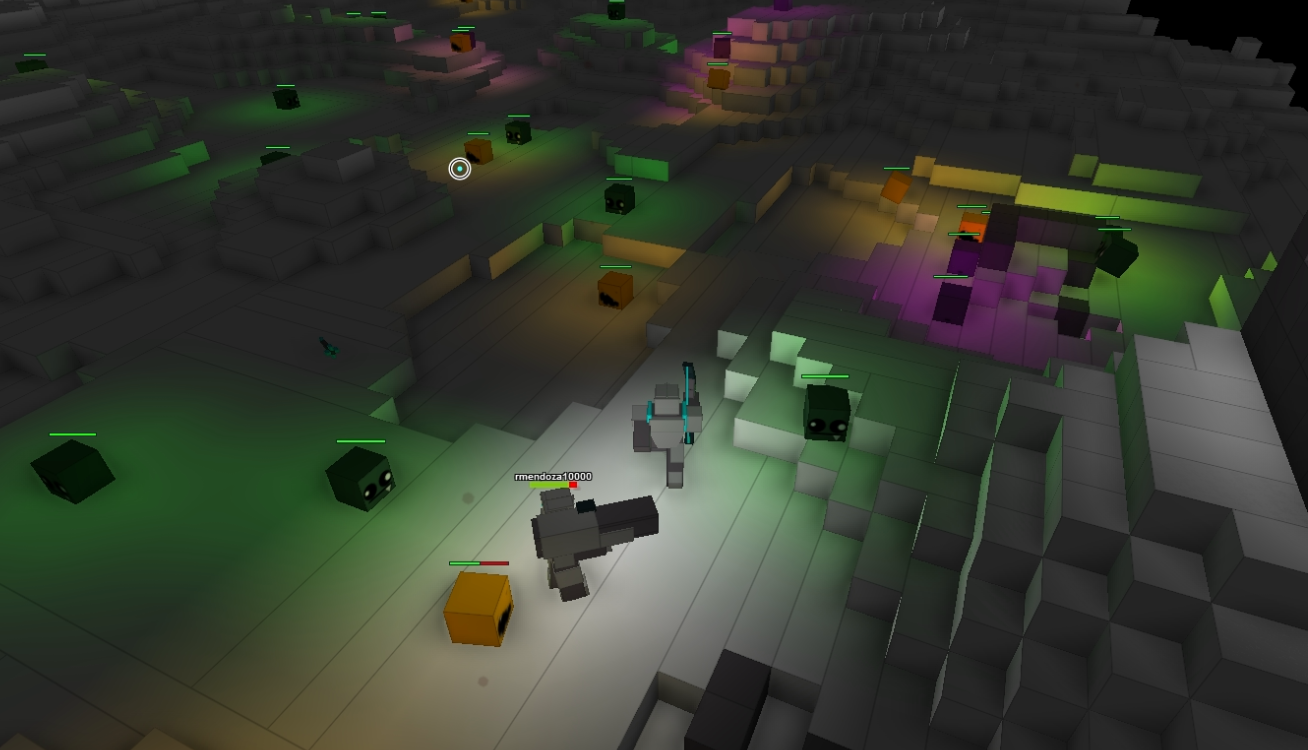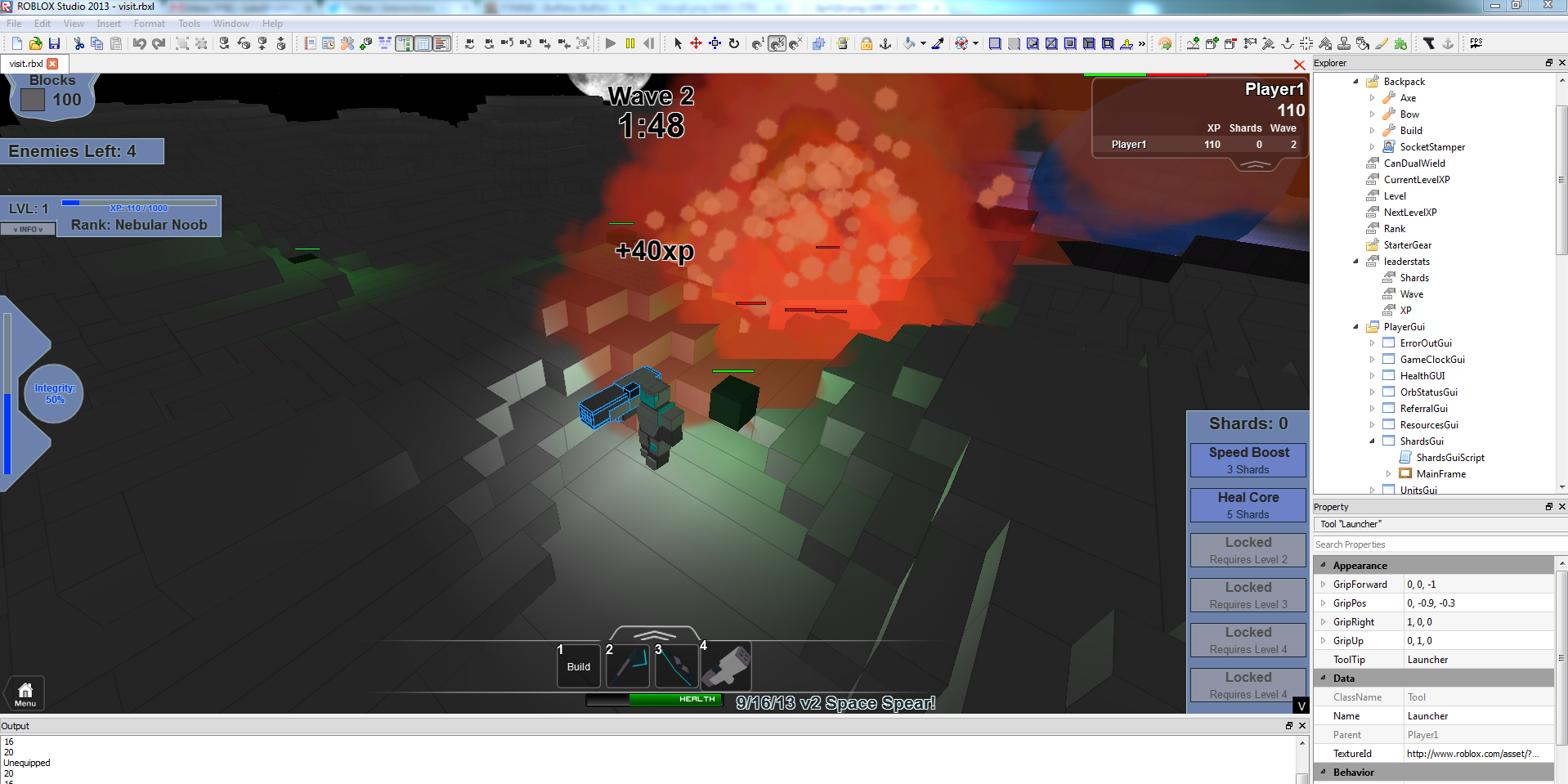Blog Archive
A couple of weeks ago, Sorcus unveiled that Space Knights was developed by the Games Team in an experiment to better understand the trials and tribulations of an everyday ROBLOX game developer. We learned a lot from this experiment, and want to continue to share our findings with you. For this follow-up article we tapped ROBLOX Games Team member Dan Healy, an integral member of the small team that developed Space Knights, to talk about its development. Take it away, Dan.
Developing Space Knights was a challenge that taught us a lot about not just making a ROBLOX game, as well as making it popular and gaining traction with an audience. I want to use this article to trace the origins of Space Knights and share the steps we took to make it what it is today.
The beginning
Many months ago we decided to allocate a small portion of our workload to creating Space Knights, and we started brainstorming. Originally we wanted Space Knights to be a PvP game–we typically like to create multiplayer games where players compete against players, as this makes the game infinitely replayable.The initial gameplay style was capture the flag, though soon after beginning work we opted to make a game where everyone works together to accomplish a single objective.
With a gameplay style set, our small team built the basic infrastructure of the game. We made a single melee weapon, and created these basic, simple enemies that would swarm your character at the start of the match. This basic premise revealed to us that there was a lot of work to be done–the enemy AI didn’t work well with one another and swarms often jammed, got stuck, or went in the wrong direction. We had a somewhat functional base plate, but it was time to refine the experience.
Overcoming the “tech demo” stigma
This is where the real learning began. We had a general idea of what we wanted to accomplish, and a very specific vision for the visual aesthetic we wanted this game to have. We wanted to push the boundaries of how a ROBLOX game could look–to the point that it almost proved to be our un-doing. You see, it’s easy to become focused on pushing tech boundaries. We spent so much time creating boundary-pushing visual tech that we lost track of what we set out to do: make a great game. After weeks of work, we didn’t have a game; we had a functional tech demo. It was then that we all took a step back, looked at what we had achieved, and began to rethink.
So sure, we had this great looking experiment. But people weren’t playing it, and for good reason: there was no point to it. You enter the game. You like how it looks. You clear the swarm. There was no gameplay beyond that. There was no reason to continue to play. Popular ROBLOX games, for the most part, aren’t tech demos. They’re, well, games. We needed to turn Space Knights into one. Here’s what we did.
Bodies: Stickmasterluke created custom Space Knight bodies. This may sound like a minor and aesthetic addition, but they totally changed the feel of the game, especially in terms of immersion. When you spawn into a game and you’re dressed as a knight, you’re sucked into it. You’re no longer your avatar, you are an elite uniformed slaying machine! There’s a reason these knights later became the icon of our game.
Instructions: This again may seem minor, but we were amazed by how much this addition changed the feel of Space Knights. We started thinking, “why are these knights fighting a swarm of enemies? What’s at stake?” That’s where the idea for a “core” came into play. We didn’t want there to be any confusion. You join the game as a knight, with a weapon. You are immediately told, “Defend the Core.” Just like that, our tech demo had an objective.
Waves: We started to consider how the core gameplay mechanics would function in a way that would keep players engaged. That’s when the idea of escalating “waves” of enemies arose. We began creating enemies that have to be attacked using different approaches and abilities. One of the best parts of our “tech demo” baseplate is that it was built to be entirely scalable, meaning we could easily make changes to its infrastructure. We also had one of our interns, Stravant, developing an artificial intelligence “pathing” code for the swarms of enemies that was so complex and innovative that we’ll be talking specifically about its development in a future article.
The importance of progression
Progression was a key word that hung in orbit over the Space Knights team. We had weapons. We had waves of enemies. Now we had to think, “how does this game progress?” One huge thing we learned from developing ROBLOX Battle is the power of respite. You can only game for so long before needing a small break. That’s exactly what we decided would be best for Space Knights–each and every wave of enemies will become larger, more varied, and harder to beat. But if you survive? Take a breather.
We started thinking about the importance of goals, both explicit and implicit. Explicitly, the goal is simple: be a knight, defend the core. How could we make such a simple goal more complex?
- Shards! We introduced shards as a means to use special abilities, like refilling the health meter of the core or setting your space suit ablaze and running through enemies to cause massive damage quickly. This added much needed variety to the gameplay.
- Weapons! We added a leveling system that rewards you for surviving with more powerful and visually awesome guns and melee weapons.
- Stats! You could see how many waves other members of your game instance have survived. High numbers would daunt players, but also tickle their competitive bone.
- Enemies! Adding new types of enemies not only creates a varied gameplay experience, but gives players a feeling of accomplishment as they continue to see new types of enemies. We made enemies that could climb, fly, rush, and made each subsequent wave of enemies an unknown combination of types of opponents.
We took the explicit goal of the game, and supplemented it best we could. What about implicit goals? We kept two main ones in mind:
- A unique challenge, each and every round.
- Let competitive nature fuel ongoing interest.
The first part has been touched on in the paragraph above, but the second part can be further scrutinized. We intentionally made Space Knights an extremely transparent multiplayer experience–if you were gaming with other players who were a higher-level than you, we wanted you to see what they could do. When you first start Space Knights, you’re given an axe and a bow and arrow. But as you play, you’ll notice other higher level players launching rockets, lasers, casting spells, and causing massive damage with high-power weapons and abilities. When you see this happening you instinctively think, “I want to get there.”
The takeaway
Saying that we learned a lot from this experiment would be an understatement. As Sorcus mentioned in the previous article, this was the largest experiment we’ve ever attempted, and we learned loads of invaluable information. I’ll try to sum that information up now:
You don’t have to change tech to make it good. Leverage what you have and know. We spent so much time trying to build the tech behind Space Knights that we ended up creating a tech demo, not a game. On ROBLOX, you can work on a project infinitely to make it better and better, but you’ve got to find a balance. You have to determine when it’s time to stop working on one thing, and start working on another. You can polish forever, but it’s (scarily) easy to get caught up in refinements. Keep moving forward to keep the creative juices flowing.
 Simple ideas aren’t bad ideas. The minor additions to this game are what made it great. Some of the simplest additions made Space Knights an engaging experience that kept people hooked. Like immediate positive reinforcement–every time you wipe out an enemy, you see the experience you can gain right there in front of you! The idea for the “Core Heal” special ability mentioned above came from realizing, “the core’s health only goes down. What if there was a way to make it go up?” Something as simple as making other players’ highest wave scores visible to all players in the server brought an urgent sense of competition. Simple ideas can shape the fundamentals of very complex games.
Simple ideas aren’t bad ideas. The minor additions to this game are what made it great. Some of the simplest additions made Space Knights an engaging experience that kept people hooked. Like immediate positive reinforcement–every time you wipe out an enemy, you see the experience you can gain right there in front of you! The idea for the “Core Heal” special ability mentioned above came from realizing, “the core’s health only goes down. What if there was a way to make it go up?” Something as simple as making other players’ highest wave scores visible to all players in the server brought an urgent sense of competition. Simple ideas can shape the fundamentals of very complex games.
All the ROBUX or tickets in the world cannot buy success. Space Knights was available to play all throughout its development, though it didn’t become a popular game until we made it good. If you’ve made a game that you’re proud of and feel is complete, run some ads!





